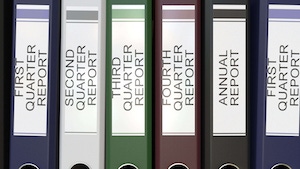Plastics machinery shipments rise 6% in second quarter
The preliminary Q2 estimate for reporting companies totaled $335.6 million, 6% over Q2 2016 and 10% higher than Q1 2017.
September 22, 2017

 North American shipment of plastics machinery registered a year-over-year gain in Q2 of 2017, according to statistics compiled and reported by the Plastics Industry Association’s Committee on Equipment Statistics (CES; Washington, DC). This halted a trend of three consecutive quarterly declines.
North American shipment of plastics machinery registered a year-over-year gain in Q2 of 2017, according to statistics compiled and reported by the Plastics Industry Association’s Committee on Equipment Statistics (CES; Washington, DC). This halted a trend of three consecutive quarterly declines.
The preliminary estimate for shipments of primary plastics equipment (injection molding, extrusion and blowmolding) for reporting companies totaled $335.6 million in the second quarter. This was 6% higher than the total of $316.6 million in Q2 of 2016 and it was 10% stronger than the revised $305.3 million from Q1 of 2017. The year-over-year gain in Q2 followed a revised 8.9% year-over-year decrease in the total from Q1.
“The shipments data for plastics equipment posted a solid gain in the second quarter, but it remains to be seen whether an upward trend can be sustained in the second half of the year. I believe a more likely scenario is that the data in the second half of this year will come in flat to down,” said Bill Wood of Mountaintop Economics & Research Inc. (Greenfield, MA). “The underlying economic fundamentals in the United States should continue to grind gradually higher, and global demand is also expected to improve moderately this year. If Congress passes corporate tax reform in 2017, then I still believe that an uptrend in machinery data could re-emerge in 2018.”
The shipment value of injection molding machinery increased 9% in Q2 when compared with last year.
The shipment value of single-screw extruders declined by 16%. The shipment value of twin-screw extruders, which includes both co-rotating and counter-rotating machines, jumped 56%.
The shipment value of blowmolding machines slipped by 2% in Q2.
The eight-year upward trend in auxiliary equipment data appeared to level off in the second quarter, but the level of activity remained strong.
The mixed results from the various segments in the CES machinery data in the second quarter were weaker than the solid gains posted in two other data series that track the overall U.S. industrial machinery sector. According to data compiled by the Census Bureau, the total value for new orders of U.S. industrial machinery jumped 14% in Q2 of 2017 when compared with the same period last year.
Another indicator of overall demand for industrial machinery is compiled and reported by the Bureau of Economic Analysis (BEA) as part of its GDP dataset. According to the BEA, business investment in industrial equipment increased 6.7% at a seasonally adjusted, annualized rate in Q2 of 2017 when compared with the previous year.
When CES asked plastics machinery suppliers about their future expectations, the Q2 survey showed that 86% of respondents expect market conditions to either hold steady or get better during the next year. This is down moderately from 91% in Q1.
The outlook for global market conditions in the coming year was mostly steady in Q2. Expectations for North America called for steady-to-better conditions, but there was an increase in negative sentiment. Mexico was expected to be mostly better. The outlook for Latin America called for steady-to-better, while the expectations for Europe and Asia called for mostly steady conditions.
The respondents to the Q2 survey currently expect that medical and packaging will be the strongest end markets in the coming year. The expectations for demand from the automotive sector were mixed. The outlook for appliances, electrical and construction sectors called for steady-to-better conditions. Demand from the industrial sector was expected to be mostly steady.
About the Author(s)
You May Also Like




